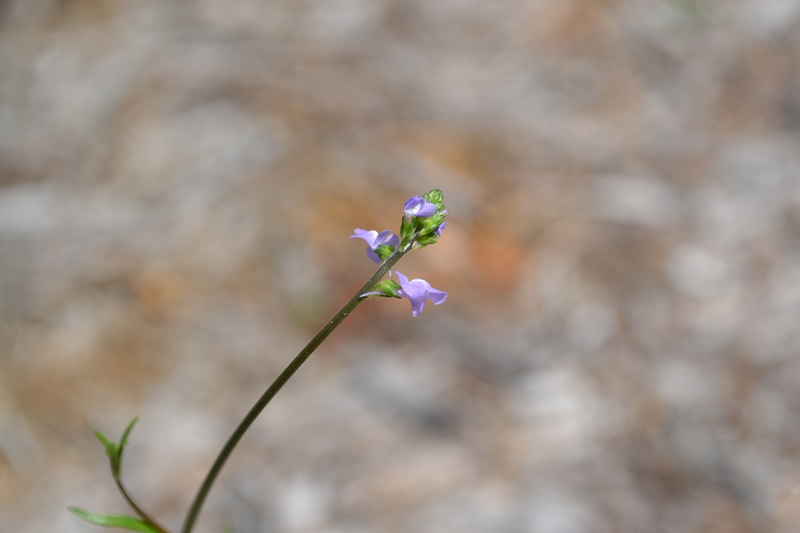
by Beth Bolles | Apr 9, 2018
The change in North Florida temperatures from cooler to warmer is making many winter weeds more noticeable as they begin to flower and form seed. Not all of these plants should be considered for mowing or hand pulling. There are several wildflowers that grow in landscape beds and thinning areas of lawns and can be enjoyed before consistent heat returns.

Toadflax flowers are held above the foliage and are light purple. Photo by Beth Bolles, UF IFAS Extension Escambia County
One very delicate wildflower that is growing now is the Toadflax, Linaria canadensis. The leaves are very small and grow low on the ground. Thin flower stalks grow several inches and are topped with light purple flowers. Although toadflax pops up in beds and lawns don’t be so quick to pull it out. This wildflower is a host to the Buckeye butterfly, one of our earlier visitors to gardens. If you look closely you may even see the tiny black, spiny caterpillar eating toadflax leaves. Visit the UF publication on the Buckeye butterfly to learn more.
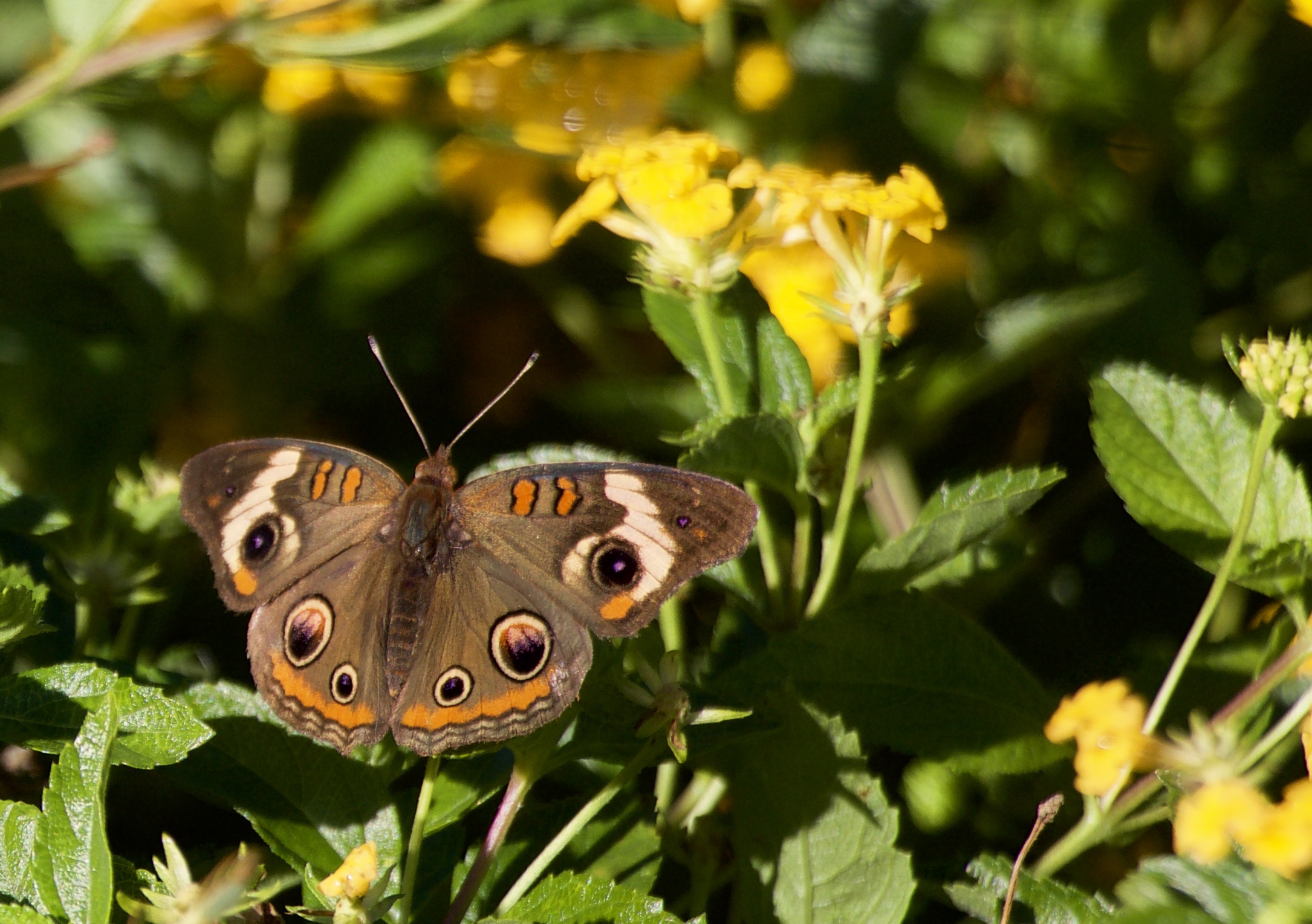
Adult buckeye butterflies are common in landscapes in early spring and late summer. Photo by Lo Sitton, UF IFAS Extension Escambia County
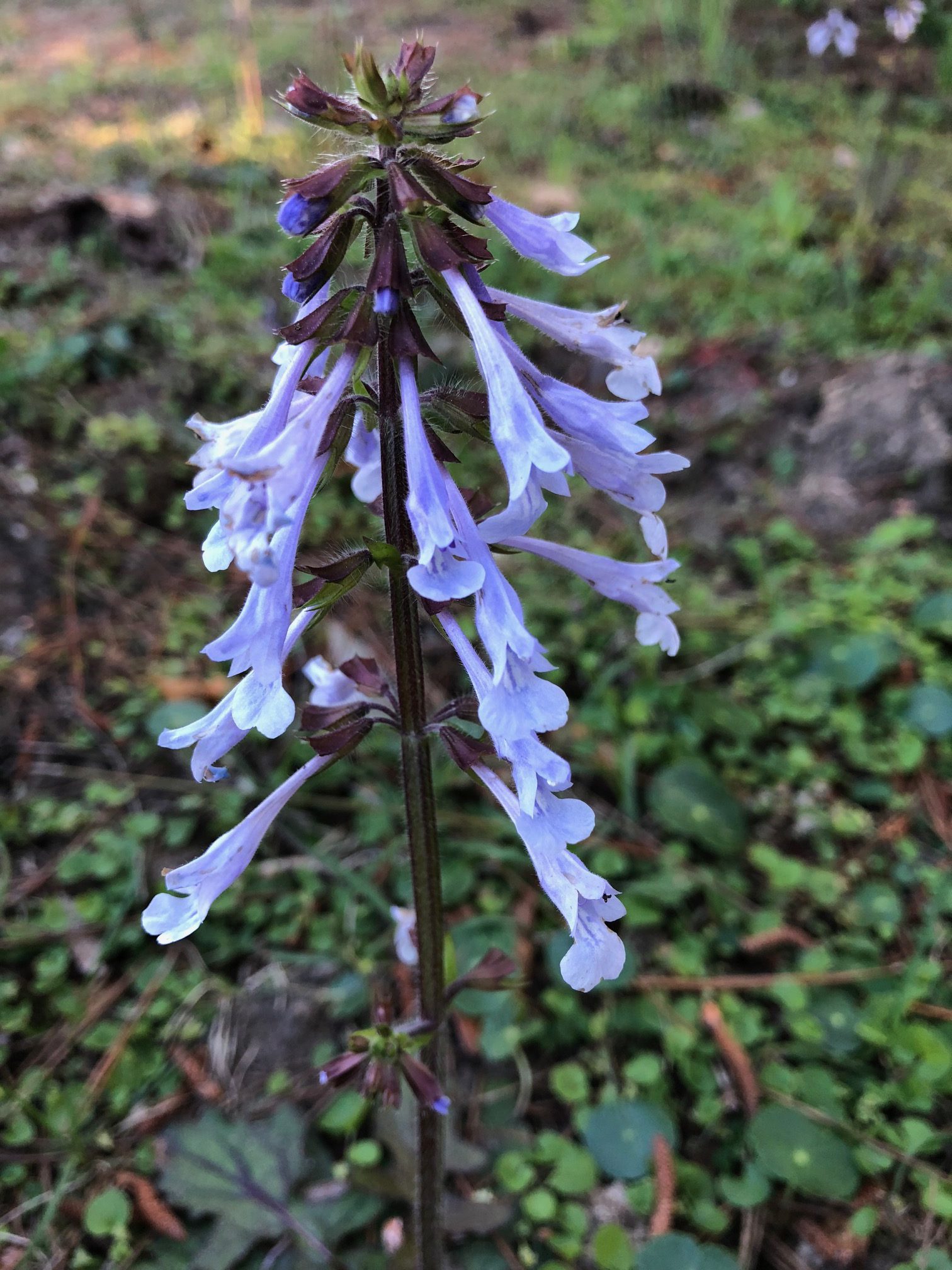
by Mary Salinas | Mar 26, 2018
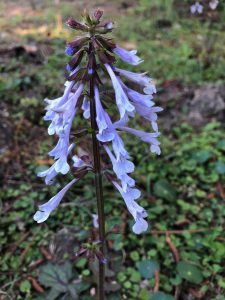
The spike of lavender blooms of lyreleaf sage. Photo credit: Mary Salinas.
Spring wildflowers are popping up along our roadways and along woodland edges. One of our native perennial beauties you can enjoy right now is lyreleaf sage, Salvia lyrata, with spikes of tubular lavender flowers rising about a foot above the ground. The blooms, which occur late winter through late spring, attract bees and butterflies and provide them a good source of nectar. It also is a good host plant for aphids, which in turn, can make it a good banker plant and feeding station for ladybug larvae.
The irregularly-shaped leaves grow in a rosette hugging the ground and can make for a natural ground cover in part shade areas. These attractive leaves are easily identifiable by their purple stems, edges and veins in sharp contrast to the bright green of the rest of the leaf. Lyreleaf sage belongs to the mint family and shares the characteristic square-shaped stems and two-lipped flowers.
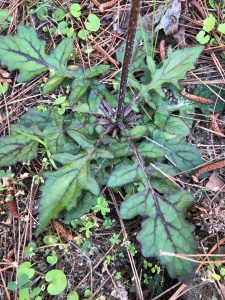
Leaves of lyreleaf sage form a ground hugging rosette. Photo credit: Mary Salinas.
Whatever garden conditions you have, lyreleaf sage should be able to adapt. It tolerates drought, flooding and most soil types. Be aware, though, that this beauty produces lots of seed and can spread quickly. This can be a very desirable trait for establishing a wildflower meadow but challenging if you want to keep it contained in a small area. To manage its’ spread, remove flower spikes after the blooms fade to prevent most seed formation.
Lyreleaf sage can usually be found in native plant or local nurseries; seed can be found through online wildflower seed sources.
For more information:
Planting and Care of Salvias in Landscapes
Florida Wildflower Foundation
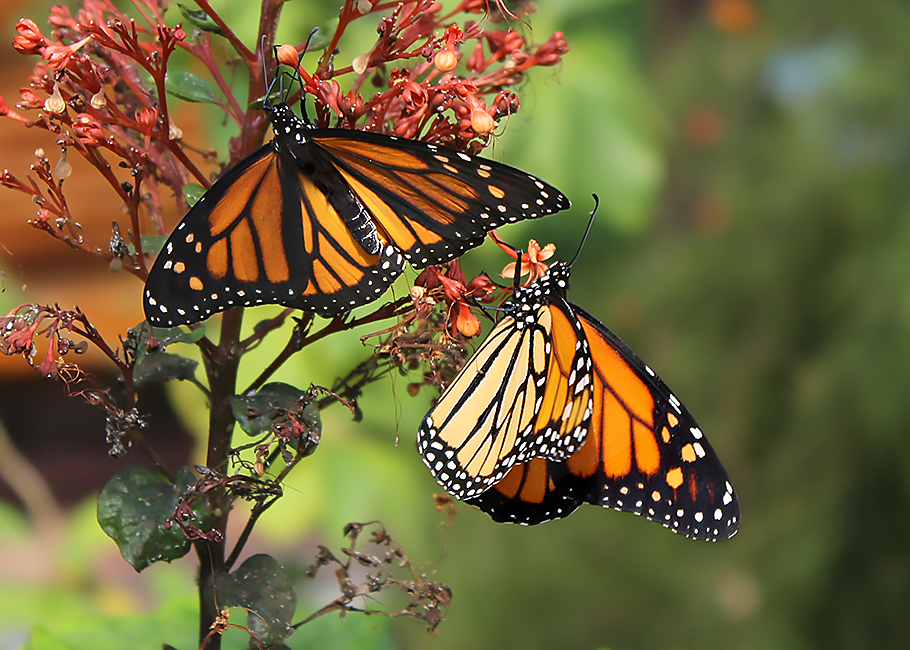
by Mary Salinas | Dec 14, 2017
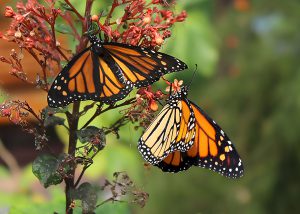
Monarch butterflies. Photo credit: Pia-Riitta Klein.
We have grown to love monarch butterflies, with their striking orange and black markings and their fascinating annual migration from southern Canada 3,000 miles south to Mexico. To help them, we have increasingly planted milkweed, the only plant on which their caterpillars will feed. In northwest Florida, the milkweed species most planted has been tropical milkweed, Asclepias curassavica, as it is lush, showy and easy to grow.
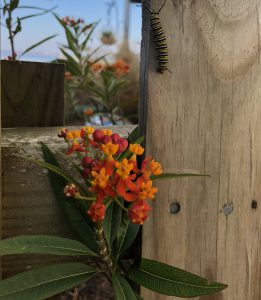
Tropical milkweed, Asclepias curassavica, was visited by this monarch caterpillar who is now off to find a suitable place to make his transformation into a chrysalis. Photo by Mary Salinas, UF/IFAS Extension.
Tropical milkweed, unlike our native milkweeds that die back in late fall, will continue to grow through the winter unless killed by a hard freeze. Even if the cold kills the stems, it may regrow quickly from the roots. This seems like an advantage, but maybe not. The availability of a host plant for the caterpillars may be prompting adult females to stay and lay eggs rather than migrate south and be protected from deadly freezes.
Experts are also exploring links between the longer persistence of the tropical milkweed into winter and a build-up on those plants of a serious parasite Ophryocystis elektroscirrha, commonly referred to as OE.
So, what is the answer?
- Cut back any tropical milkweed to the ground at Thanksgiving. That may encourage female monarchs to migrate and prevent a deadly build-up of OE spores on the plants.
- Consider adding some native milkweed species to your butterfly garden. Here are some recommended species from Dr. Jaret Daniels:
- Aquatic Milkweed (Asclepias perennis)
- Swamp Milkweed (Asclepias incarnata)
- Pinewoods Milkweed (Asclepias humistrata)
- Redring Milkweed (Asclepias variegata)
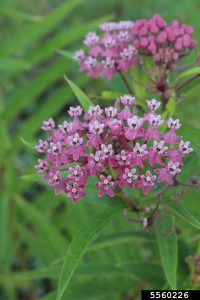
Swamp Milkweed, Asclepias incarnata. Photo credit: Chris Evans, University of Illinois.
For more information:
Are non-native milkweeds killing monarch butterflies?
Monarch Joint Venture: Potential risks of growing exotic (non-native) milkweeds for monarchs
Monarch Butterfly, Danaus plexippus Linnaeus (Lepidoptera: Nymphalidae: Danainae)
MonarchWatch.org
Gardening Solutions: Milkweed
by Gary Knox | Aug 17, 2017
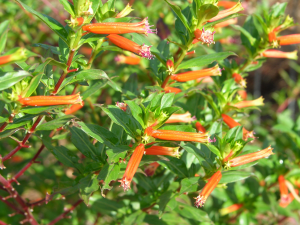
Cuphea ignea
Photo courtesy: Gary Knox
Cupheas are perennials that produce bright orange, red, yellow or purple flowers all summer and fall. Some species are called cigar plants due to their tubular, cigar shaped flowers tipped in red or yellow (like a lit cigar). Others are sometimes called firecracker plants because their cylindrical flowers are bright red or orange (looking like a firecracker). By any name, their nectar-filled, tubular flowers are widely known for attracting large numbers of hummingbirds, butterflies and bees. In addition, young stems of some species are reddish, further adding color and contrast to the usually narrow, lance-shaped green foliage.
As a group, cupheas grow best in full to part sun (the brighter, the better) and well-drained, moderately fertile soil. Cupheas are drought tolerant once established, but grow faster and larger with regular moisture and occasional fertilization. Their origins in warm climates allow them to thrive in heat, but likewise make some species sensitive to cold winters. Those that are frost tender along the Gulf Coast are best placed in a sheltered location in the garden. Cupheas are pest and disease resistant and are not invasive in Florida. They are not truly deer resistant, yet reports suggest cupheas are not favored by deer.
Cupheas are great summer performers in bright, hot and dry locations. Flowering begins in summer and continues through fall until short days and cool weather reduce flowering or frosts cause dieback. Along the Gulf Coast, cool winter weather slows them down, so re-growth doesn’t occur until mid to late spring, and flowering usually doesn’t begin until days and nights are warm. Growth and appearance of many cupheas are improved if plants are pruned or cut to the ground in late winter.
Over 200 species of Cuphea are native to Mexico and the warm-temperate and tropical Americas. Of these and their hybrids, the cupheas listed below are great summer-flowering perennials for the northern Gulf Coast.
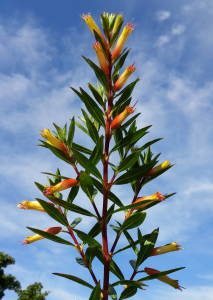
Cuphea micropetala
Photo courtesty: Gary Knox
Cigar Plant (Cuphea ignea)
This fine-textured plant produces red to orange tubular flowers about an inch long. This cigar plant is hardy to about 20°F. It grows about 2 feet tall and 3 feet wide along the Gulf Coast, though it would be a larger, evergreen shrub in warmer climates. This cuphea tends to have lanky growth, so occasional summer pruning will stimulate branching which results in more dense growth.
Cigar Plant or Candy Corn Plant (Cuphea micropetala)
Flowers are 1.5 inches long, emerge pale yellow and gradually turn orange from the base upwards, offering a colorful, two-tone effect. Foliage is hardy to 25-30°F and this cigar plant is root hardy to at least 15°F. Stems should be cut back to ground level in late winter to keep the plant tidy. Clumps spread slowly outward by rhizomes, and the plant will reach 3 feet tall and wide along the Gulf Coast.
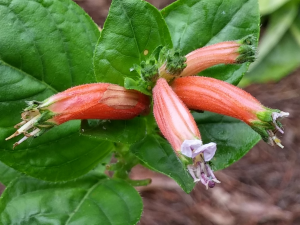
Cuphea schumannii
Photo courtesy: Gary Knox
Orange Cigar Plant or Schumann’s Cuphea (Cuphea schumannii)
This sprawling, floriferous cigar plant prefers moist, well-drained soil to thrive. Barrel-shaped, 1- to 1½-inch blooms are orange and yellow and sometimes have small purple petals at the tips. Flowers cover the branch terminals in the heat of summer and into fall. This plant is hardy in Zones 8 to 9 (at least down to the mid 20s°F). Unlike many other cupheas, leaves of orange cigar plant are oval- to heart-shaped. Stems grow 2 to 3 feet tall and readily flop or fall over. Plan to give orange cigar plant lots of room to sprawl through the garden!
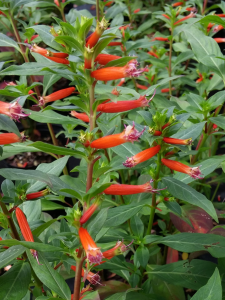
Cuphea ‘David Verity’
Photo courtesy: Gary Knox
‘David Verity’ Large Firecracker Plant (Cuphea ignea × micropetala ‘David Verity’)
This floriferous hybrid produces flowers that are dark orange with a short yellow-orange flared tip and purple filamentts. Well-adapted to the Gulf Coast, this plant is foliage hardy down to 25-30°F and root hardy to at least 15°F. In Zone 9 this plant will grow as an evergreen shrub up to 4 to 5 feet tall and wide, but it will be smaller in areas where frost or freezes occur. This selection is believed to be a hybrid between Cuphea ignea and C. micropetala that was given in the mid 1970s to David Verity, then the manager of the UCLA Mildred Mathias Botanic Garden. It was subsequently named for him when later brought into commercial production.
‘Vermillionaire®’ Large Firecracker Plant (Cuphea ‘Vermillionaire®’)
This new hybrid appears to be a superior cuphea because it grows as a naturally compact plant that produces more flowers than other selections. ‘Vermillionaire®’ grows about 24 inches or more tall and wide with a compact, mounding habit. Orange tubular flowers are produced continuously until late fall. This cuphea is too new to know the full extent of its hardiness, but it is expected to be a perennial in Zones 8 and higher.
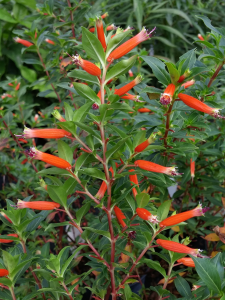
Mexican Heather (Cuphea hyssopifolia)
Unlike the previous cupheas, this plant has small purple flowers, and some selections sport white flowers. Another difference is Mexican heather’s finely textured, bright green leaves. Gulf Coast Zone 8 plants are usually killed to the ground in winter, often recovering by summer but resulting in a compact plant growing less than 24 inches tall and wide. In Zones 9 and higher, Mexican heather is a larger-growing semi-evergreen tropical shrub. Reported pests are leaf-chewing beetles (Altica and Colaspis spp.) and the twig-dwelling lesser snow scale (Pinnaspis strachani). Mexican heather works well for edging beds or sidewalks, helping to define and soften pathways. Cultivars include Allyson, Lavender Lace, Purple Nurple™ and the white-flowered Monga (Itsy Bitsy° White) and ‘White Whispers’.
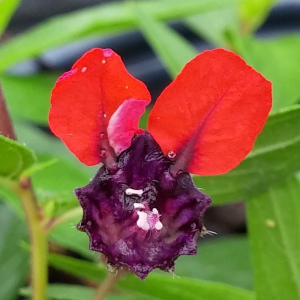
Bat-Faced Cuphea
Photo courtesy: Gary Knox
Bat Face Cuphea (Cuphea llavea)
Each 1-inch flower consists of a purple tube lipped with two red, upright lobes. By viewing the flower with its tip facing you, it takes only a little imagination to see the two red lobes resemble large “ears” above the purple “face” of a bat, hence the name. Along the Gulf Coast, bat face cuphea grows mound-shaped 8 to 24 inches tall and wide, depending upon the selection. It is very heat and drought tolerant but requires better drainage than the other cupheas. Bat face cuphea is evergreen down to the upper 20s°F and root hardy into the lower 20s°F. Improved forms of bat face cuphea include the cultivars, Flamenco Samba, Georgia Scarlet, Mellow Yellow, Miss Priss, Tiny Mice®, Sriracha™ Pink, Sriracha™ Violet, Torpedo, Vienco° Lavender and Vienco° Red.
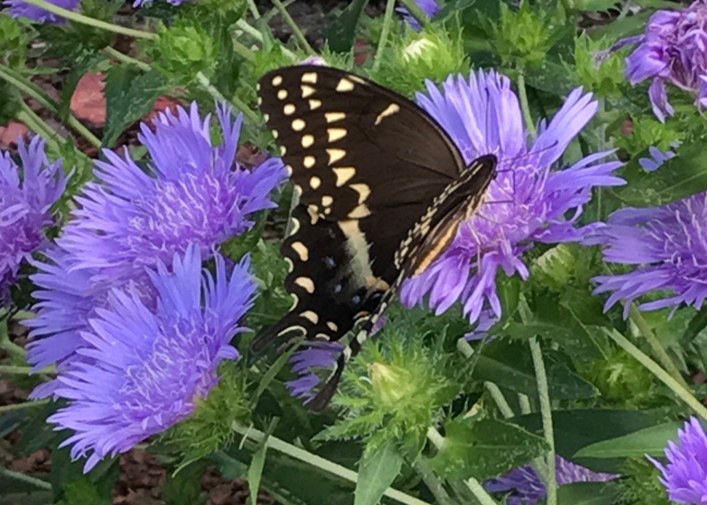
by Mary Salinas | Jun 22, 2017
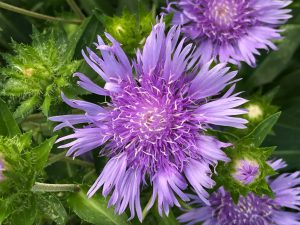
‘Mel’s Blue’ Stokes’ Aster. Photo credit: Mary Derrick, UF/IFAS Extension.
Florida is home to some of the most beautiful flowering perennials. An exceptional one for the panhandle landscape is Stokes’ aster (Stokesia laevis) as it is showy, deer resistant and easy to care for. Unlike other perennials, it generally is evergreen in our region so it provides interest all year.
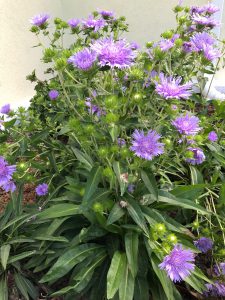
Upright habit and profuse blooming of ‘Mel’s Blue’ Stokes’ Aster. Photo credit: Mary Derrick, UF/IFAS Extension.
The original species of Stokes’ aster has purplish-blue flowers but cultivars have been developed with flowers in shades of white, yellow, rosy-pink and a deep blue. The flowers are large, eye-catching beauties that bloom in spring and summer. They also last well as a cut flower. You will find that bees and butterflies will appreciate their nectar! Remove spent flowers after blooms have faded in order to encourage repeat flowering.
A location in your landscape that provides part sun with well-drained rich soil is best for this perennial. Stokes’ aster is native to moist sites so it does best with regular moisture.
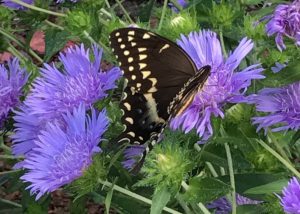
Stokes’ aster attracts butterflies like this black swallowtail. Photo credit: Mary Derrick, UF/IFAS Extension.
As with many perennials, the plant will form a large clump after a few years; this gives you the opportunity to divide the clump in the fall and spread it out in your landscape or share the joy with your gardening buddies.
For more information:
Gardening with Perennials in Florida
by Julie McConnell | May 26, 2017
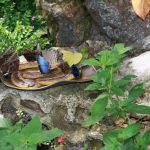
Blue Morpho Butterfly feeding on banana. Photo: J_McConnell, UF/IFAS
Have you been thinking about creating a butterfly garden but don’t know where to start?
Afraid it’s too much upkeep or has to look wild and untamed?
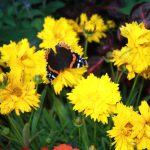
Red Admiral Butterfly. Photo: J_McConnell, UF/IFAS
Spend a Saturday morning with the UF/IFAS Master Gardeners of Bay County to see how to design, install, and maintain a colorful low maintenance butterfly garden.
Next Saturday, June 3rd, is the free Butterfly Gardening Workshop in Panama City at the UF/IFAS Extension Office at 2728 E. 14th Street. Come learn about butterfly gardening and see our vibrant garden.
Please register ahead of time so that we can supply enough materials for all attendees by calling 850-784-6105 or sign up online.






















